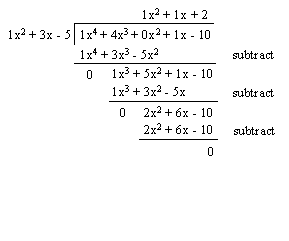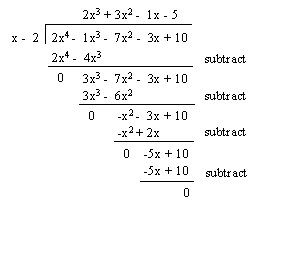Please wait while we process your payment
If you don't see it, please check your spam folder. Sometimes it can end up there.
If you don't see it, please check your spam folder. Sometimes it can end up there.
Please wait while we process your payment
Get instant, ad-free access to our grade-boosting study tools with a 7-day free trial!
Learn more



This site is protected by reCAPTCHA and the Google Privacy Policy and Terms of Service apply.
Create Account
Select Plan
Payment Info
Start 7-Day Free Trial!

Annual
2-49 accounts
$22.49/year + tax
50-99 accounts
$20.99/year + tax
Select Quantity
Price per seat
$29.99 $--.--
Subtotal
$-.--
Want 100 or more? Request a customized plan
You could save over 50%
by choosing an Annual Plan!

SAVE OVER 50%
compared to the monthly price!
| Focused-studying | ||
| PLUS Study Tools | ||
| AP® Test Prep PLUS | ||
| My PLUS Activity | ||
$22.49/month + tax
Save 25%
on 2-49 accounts
$20.99/month + tax
Save 30%
on 50-99 accounts
| Focused-studying | ||
| PLUS Study Tools | ||
| AP® Test Prep PLUS | ||
| My PLUS Activity | ||
No Fear provides access to Shakespeare for students who normally couldn’t (or wouldn’t) read his plays. It’s also a very useful tool when trying to explain Shakespeare’s wordplay!
Erika M.
I tutor high school students in a variety of subjects. Having access to the literature translations helps me to stay informed about the various assignments. Your summaries and translations are invaluable.
Kathy B.
Teaching Shakespeare to today's generation can be challenging. No Fear helps a ton with understanding the crux of the text.
Kay H.
No Fear provides access to Shakespeare for students who normally couldn’t (or wouldn’t) read his plays. It’s also a very useful tool when trying to explain Shakespeare’s wordplay!
Erika M.
I tutor high school students in a variety of subjects. Having access to the literature translations helps me to stay informed about the various assignments. Your summaries and translations are invaluable.
Kathy B.
Teaching Shakespeare to today's generation can be challenging. No Fear helps a ton with understanding the crux of the text.
Kay H.
Create Account
Select Plan
Payment Info
Start 7-Day Free Trial!
You will only be charged after the completion of the 7-day free trial.
If you cancel your account before the free trial is over, you will not be charged.
You will only be charged after the completion of the 7-day free trial. If you cancel your account before the free trial is over, you will not be charged.
Order Summary
Annual
7-day Free Trial
SparkNotes PLUS
$29.99 / year
Annual
Quantity
51
PLUS Group Discount
$29.99 $29.99 / seat
Tax
$0.00
SPARK25
-$1.25
25% Off
Total billed on Nov 7, 2024 after 7-day free trail
$29.99
Total billed
$0.00
Due Today
$0.00
Promo code
This is not a valid promo code
Card Details
By placing your order you agree to our terms of service and privacy policy.
By saving your payment information you allow SparkNotes to charge you for future payments in accordance with their terms.
Powered by stripe
Legal
Google pay.......



Please wait while we process your payment

Sorry, you must enter a valid email address
By entering an email, you agree to our privacy policy.
Please wait while we process your payment

Sorry, you must enter a valid email address
By entering an email, you agree to our privacy policy.
Please wait while we process your payment

Your PLUS subscription has expired
Please wait while we process your payment
Please wait while we process your payment

Long Division of Polynomials
When attempting to find the roots of a polynomial, it will be useful to be able to divide that polynomial by other polynomials. Here we'll learn how.
Long division of polynomials is a lot like long division of real numbers. If the polynomials involved were written in fraction form, the numerator would be the dividend, and the denominator would be the divisor. To divide polynomials using long division, first divide the first term of the dividend by the first term of the divisor. This is the first term of the quotient. Multiply the new term by the divisor, and subtract this product from the dividend. This difference is the new dividend. Repeat these steps, using the difference as the new dividend until the first term of the divisor is of a greater degree than the new dividend. The last "new dividend" whose degree is less than that of the divisor is the remainder. If the remainder is zero, the divisor divided evenly into the dividend. In the example below, f (x) = x4 +4x3 + x - 10 is divided by g(x) = x2 + 3x - 5.

Two important theorems pertain to long division of polynomials.
The Remainder Theorem states the following: if a polynomial f (x) is divided by the polynomial g(x) = x - c, then the remainder is the value of f at c, f (c).
The Factor Theorem states the following: Let f (x) be a polynomial; (x - c) a factor of f if and only if f (c) = 0. This means that if a given value c is a root of a polynomial, then (x - c) is a factor of that polynomial.
Synthetic division is an easy way to divide polynomials by a polynomial of the form (x - c). It is both a way to calculate the value of a function at c (Remainder Theorem) as well as to check whether or not c is a root of the polynomial (Factor Theorem). Synthetic division is a shortcut to long division. It requires only three lines -- the top line for the dividend and divisor, the second line for the intermediate values, and the third line for the quotient and remainder. It is done this way. Let the dividend have degree n. 1) In line one write the coefficients of the polynomial as the dividend, and let c be the divisor. 2) In line three rewrite the leading coefficient of the dividend directly below its position in the dividend. 2) Multiply it by the divisor, and write the product in line two directly below the coefficient of xn - 1. 3) Add this product to the number directly above it in the dividend (this number is the coefficient of xn - 1) to get a new number. Repeat steps two and three until the entire polynomial has been divided. The quotient will be one degree less than the dividend. The coefficients of the quotient are the first n - 1 numbers in line three. The remainder is the last number in line three. Below a polynomial of the form (x - c) is divided using long division, and then using synthetic division. Study it carefully.


Please wait while we process your payment





